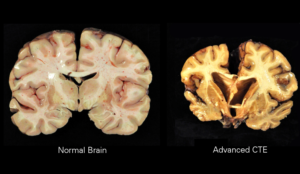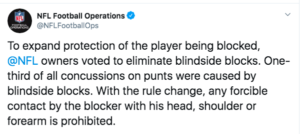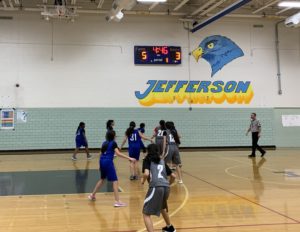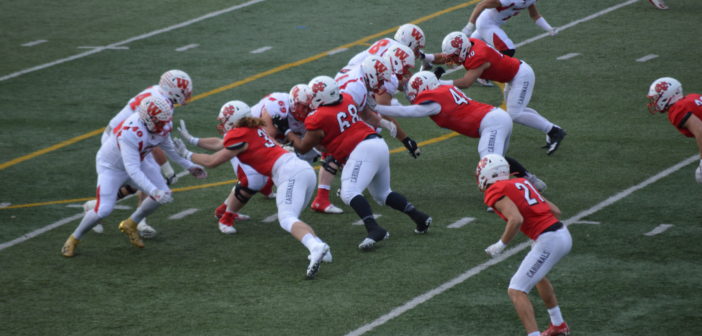A St. Charles North football player suffered a severe brain injury during a game in October of last year. Suffering an injury in one of the final plays of the game, Sophomore Aidan Carlson walked off the field but lost consciousness in the locker room. Having to be airlifted to the nearest hospital, Carlson was rushed into emergency surgery.
A lot of people when thinking about concussions will first think of football. Football has brought concussions to the forefront but is not the only sport in which athletes can suffer concussions.
According to a study conducted over five years, the American Physical Therapy Association, found that “men’s wrestling is the sport with the highest rate of sports-related concussions.” That same study also found that female athletes have higher concussion rates than their male counterparts.
Athletic trainers at NCC use the SCAT5 to diagnose a concussion. A SCAT5 is an evaluation tool that takes into account balance and memory. Athletes need to be able to recite a string of numbers and answer basic questions like “where they are” and “what’s your name.”
The most common symptoms of a concussion are headaches, dizziness, blurred vision or double vision, nausea or vomiting and memory loss. A common misconception with concussions is that an athlete has to experience multiple symptoms in order to be diagnosed with one, and that is simply not true. Athletes just need to experience one of the symptoms listed above to have a concussion.
The time it takes an athlete to bounce back from any sort of injury is different for every player and concussions are no different.
“Typically they last seven to ten days, but they can last shorter or longer than that. Every concussion is a little bit different,” said Athletic Trainer Tracy Stephen.
At NCC, athletes need to remain symptom-free for a 24-hour period before they are able to return to play. They are then put on a seven-day process that gradually increases their physical activity. An impact test is also used to ensure that an athlete is ready to return to play.
Experiencing too many concussions could lead to complications in the long run. Anyone that experiences any brain trauma on a regular basis can be susceptible to Chronic Traumatic Encephalopathy (CTE). Boston University defines CTE as a progressive degenerative disease of the brain found in people with a history of repetitive brain trauma (often athletes). It can only be diagnosed after death, by examining the brain for clumps of a protein called tau, which kills brain cells.

A normal brain versus a CTE brain.
CTE has been in the media a lot more in recent years, but it has been know to boxers since the 1920s. Dementia Pugilistica also referred to as “punch-drunk syndrome” is a variant of CTE.
Back in 2017, Dr. Ann Mckee, a neuroscientist at Boston University, conducted a research study on the brains of 202 deceased football players. Of the brains, 111 belonged to former NFL players, and out of those 110 were found to have CTE.
CTE can cause a variety of symptoms. The symptoms include memory loss, confusion, impaired judgment, impulse control problems. aggression, depression and anxiety. It also shares similar symptoms with Alzheimer’s and dementia.
“The inability to maintain relationships, emotional swings both highs and lows and concentration problems are also symptoms of CTE,” said Associate Professor of Athletic Training and Athletic Training Program Director Kendall Selsky.
Last month Netflix released a three-episode docuseries that examined the life of former New England Patriots tight end Aaron Hernandez and how he went from a star in the NFL to a convicted killer. The docuseries touches on topics ranging from his early childhood life to his career in the NFL. One topic discussed is Hernandez’s diagnosis of CTE.
After his death, Hernandez’s family decided to donate his brain to Boston University to be tested for CTE. The results from the research were astounding. Researchers found that Hernandez had stage three CTE, which is the most severe form that they’ve seen in a person his age.
With concussions and CTE being more common than not, the NFL has taken some steps to hopefully decrease the number of athletes that suffer from them.

A tweet from the NFL in March of 2019.
In March of last year, the NFL announced that blindside blocks were eliminated by its ownership, in order to increase the athlete’s safety. This ruling would be in effect for the 2019 season. The NFL mentioned that one-third of all concussions on punts were caused by blindside blocks.
The cause for CTE is repetitive brain trauma, which includes concussions with both symptoms and no symptoms. Although not all concussions lead to CTE, studies have shown that it is possible to develop it.
Is the only way to develop CTE through contact sports only? The short answer is no. A small study conducted by UCLA researchers in 2018, found that military personnel that suffered mild traumatic brain injuries had brain changes similar to former football players diagnosed with CTE.
Because the diagnosis of CTE can only be done after an athlete or military service member dies, they are forced to live with this disease without any knowledge of having it.
With athletes starting to play sports at younger ages, the risk of concussions becomes higher at an earlier age. Young children participating in sports could end up with long-term health effects. A 2016 Canadian study found that “about one-third of patients ages five to 18 who had concussions experienced lasting psychological and behavioral problems.”

“Rule changes are an important way to protect young athletes, in delaying the number of impacts to the head,” said Selsky.
Avoiding contact sports until young athletes are more developed goes a long way in ensuring their safety.
There is no way to prevent or treat concussions and CTE. Athletes have to rely on playing safe whenever participating in sports.

